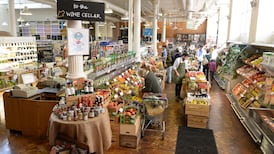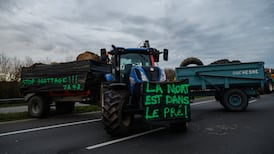Department of Agriculture officials have released 60 beef carcasses from cattle whose location could not be traced for up to two months for human consumption.
The department detained 60 cattle sent from Northern Ireland for slaughtering to a meat processor in the Republic on January 25th after it emerged they were part of a herd whose location was unknown for up to two months.
It is understood that the department has decided they can be released into the food chain, meaning that they are likely to be processed and ultimately sold for human consumption.
Meat produced here carries a “farm to fork” traceability guarantee, meaning that animals’ location should be tracked at all times from their birth through to slaughter, processing, and sale to consumers in supermarkets and butchers.
State agencies, including Bord Bia, highlight this guarantee to support sales of Irish beef and other products at home and abroad.
EU rules require cattle in the Republic to have tags and passports identifying each animal. A central Department of Agriculture database holds these details.
Meat factories have their own systems linked to this data base, which validate the information provided with each animal when it arrives for slaughter.
In this case, the department’s database highlighted a problem with the 60 animals when the meat factory attempted to process their documents.
Their identity was confirmed as cattle born in the Republic and from a herd based in the north west.
However, it emerged that their location had not been known for a period of up to two months, potentially compromising the farm to fork guarantee.
The cattle had been moved from the Republic to the north and then sent back to the south for slaughter.
Department officials detained the animals and subsequently told the factory to slaughter them and hold the carcasses, which it was originally meant to send on to a second processor in the north.
The department was in talks with the cattle’s owner, a farmer from Co Fermanagh with herds north and south of the border, through last week, while the carcasses were kept in chilled storage.
A statement from the Department of Agriculture pointed out that its officials’ concerns did not relate to the factory in the Republic where the cattle were sent.
The department said that it does not comment on specific cases. “Decisions on food chain eligibility are made primarily on the basis of food safety, including ante and post mortem examination, in addition to other relevant issues including identification and traceability,” it said.
“Food safety and food chain eligibility assessment are part of the routine checks carried out under EU legislation,” the department added.













